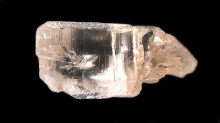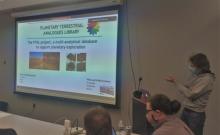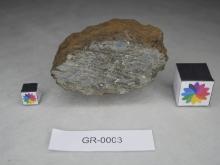Background & Objectives
Background
Comparing with Earth’s conditions and our understanding, driven by the still limited knowledge of the origin of life on Earth, results in a list of numerous requirements for favourable conditions for past and present habitability and development of biological signature hosting materials: (1) properties of available water like salinity, pH, and temperature; (2) the energy of water in the environment (e.g., quiet vs. energetic), which has implications for the stabilisation of microbial communities; (3) availability of raw materials necessary for life including the so-called CHNOPS elements and a source of electron donors, presence of mineral suites of mixed valence states for redox energy; (4) proximity to a paleo-surface to enable photosynthesis; (5) radiogenic elements for radiolysis; (6) protection from radiation like that provided by a planetary magnetic dipole field; (7) and the rate of burial, for example, in a lacustrine setting, which has implications for the viability and stability of microbial communities. Thus, we search for places in the Solar System for which such conditions comply or did comply in the past with the preserved geological record or current environmental state.
The variety of aqueous minerals identified to date are a testimony to a complex past water history and the alteration of crust-forming minerals on Mars, since these minerals span a wide range of geochemical environments. Their study in localised regions, or globally with a statistical approach, has furthermore revealed variations in time and space. A correlation with morphological features indicates that it is possible to decipher their original environments, based on the knowledge we gathered about Earth environments. Despite this diversity, some key minerals on Mars have not been detected yet, or have not been satisfactorily characterised. Future landing missions with the adequate measurements proposed here, are paramount to achieve this.

Relying on our knowledge of the geological processes on Earth is key to understand past and present geological processes on Mars
The alteration of rocks on Earth and Mars is driven by geochemical, mechanical and sometimes biological processes. On Earth, these processes can be tested and evaluated under laboratory conditions, as well as in nature, while for Mars and other planetary bodies we mainly rely on remotely detected mineral distributions and the interpretation of surface morphology to yield insight in the geological and climatic evolution of Mars or the respective planetary body. Merging these two very different lines of investigation is the goal of the PTAL project.
The video below presents the exploration context in which the PTAL project has been built.
Objectives
The main objective of the project is to build and exploit the spectral library Planetary Terrestrial Analogues Library (PTAL) for the characterisation of the mineralogical and geological evolution of terrestrial planets and small Solar System bodies. This aim will be achieved by conducting the following four tasks:
- Performing laboratory experiments under controlled conditions and documenting rock alteration of field-collected planetary (often Martian) analogue materials, so that the impact of varying of environmental conditions (e.g., gas pressure, temperature, pH-value) can be quantified. We will be able to characterise and define the geochemical aspect of habitable conditions on Mars, which is the prime target of this investigation.
- Characterising of rocks and their alteration/weathering products as input for the spectral library with standard commercial and dedicated spacecraft instrumentation (NIR, RAMAN, LIBS, XRD) under laboratory conditions and where possible on in-situ field campaigns at Earth analogue sites.
- Performing coordinated analyses of the Martian surface from both orbital and landed platforms with new spectral data.
- Developing a data base, which will allow users to jointly interpret laboratory results and newly gathered in-situ or remote sensing data using the instruments (LIBS, NIR, RAMAN) on board of current and future space missions (e.g., Hayabusa-2, Curiosity, ExoMars, Mars2020).
You can find a more detailed description of the PTAL project and different objectives in these slides
The different PTAL tasks are also detailed in this video :




